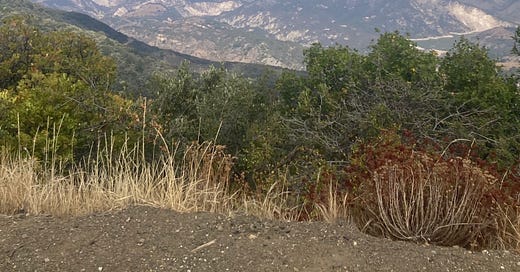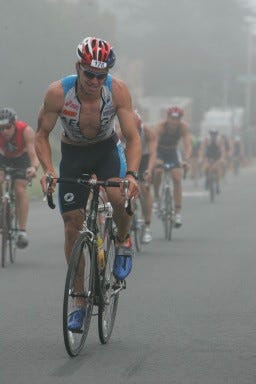The "DC Advantage" (and "SoCal Advantage") for Endurance Athletes
And What This Means for Boston Marathon’s "Heartbreak Hill"
*This article is based on an old blog of mine that was essentially a tribute to the hilly terrain in the DC/DMV region, where I lived and trained for many years. It includes more recent thoughts (i.e., another tribute) regarding my new home of LA.
If you are an endurance athlete, then you should love the DC area(!), as it adequately prepares endurance athletes to race anywhere else in the country, or the world for that matter. Barring the extreme courses that border lunatic fringe, DC proper in itself provides ample hills and undulating courses to meet the challenging terrain offered by other U.S. cities. I always considered being a DC resident an advantage for training purposes, so I hope you never get turned-off or discouraged by what DC’s trails will do to your average running pace (take it with a grain of salt), which is certainly another reason I am not a strong proponent of Garmins (too much emphasis on pace). Once you go as few as 15 miles outside the city, the rural areas of MD and VA offer some intense hills and spectacular courses.
I've coached athletes of all backgrounds, skill levels, and goal-distances, and most of them have done quite well in their races around the world, even if the course was deemed to be “daunting” at face value. Personally, I've trained and raced in most U.S. states, plus several other countries, and I can honestly say that I've never felt under-prepared, even if any of those other courses were labeled “hilly” or “challenging” according to the race website (e.g., Alcatraz tri in SF, pictured above). I recognize that I'm far behind other athletes who have raced in more corners of the world than I have, but if they originated from the DMV area, then I'd like to think they'd agree with my sentiments.
As it pertains to the infamous “Heartbreak Hill” at mile-20 of the Boston course (~100 feet over 3/4 of a mile), it’s nothing to worry about if you train consistently on hills year-round, and if you pace yourself well and are properly fueled/hydrated at that point. You might even find that it’s a bit over-rated, so don’t put any false ideas in your head pre-race regarding that particular hill! As a reference, the popular Tilden St. hill coming out of Rock Creek Park (DC) is 150-feet of climbing and much, much steeper. The Boston course is mostly downhill, which is another beast altogether, which is why it is not a guaranteed PR course (another convo for another time).
I've done training in other states and I've never felt that the DC area paled in comparison to where most road races and triathlons take place. At one point, I thought Ironman St. George (UT) in 2011 was the toughest course I've ever tackled, but I know Skyline Drive in Shenandoah Valley (VA) had me more than adequately prepared. Oddly enough, they canceled St. George after that 2011 race and only recently reinstated it as the alternative to Kona. Most of the pros dropped-out of the race in 2011, so it’s certainly fitting as a Championship course, regardless of the current controversy regarding the Kona site.
And since my move to LA in summer 2021, I have discovered the vastness of potential training grounds around these parts, including the many looooong climbs up the canyons. The annual Santa Barbara century ride is 9000-ft of climbing and was the hardest ride of my life! I’ve never climbed for an hour straight before (view in photo below). Plenty of hilly routes in SoCal to offer an advantage of its own, and there are certainly other U.S. cities that apply to this category (e.g., Charlotte, NC).
The Take Home Message is to keep exploring your area and use variety on your long run routes! Some of you Run. The. Same. Route. Every. Weekend. Pack your run shoes more often when you travel and head off the beaten (touristy) path. Also, if you train outside year-round in DC, then you also know the weather in other states won't keep you down. Meaning, it gets super humid/muggy in the Mid-Atlantic in the summer, so if you've been acclimating well, then your mid-summer vacation to another “hot” destination might actually allow you to have some higher-quality workouts.
You can try treating some weekend workouts as special days so that you can go looking for the hillier spectacular sites with that purpose in mind. Finally, on the other hand, you also need to make sure you aren't doing all of your key workouts on rolling terrain. You need to ensure you have solid long runs on flat courses, which is related to another topic/article of mine: Breakthrough Performances.
Train Smarter, Not Harder!
Mike





